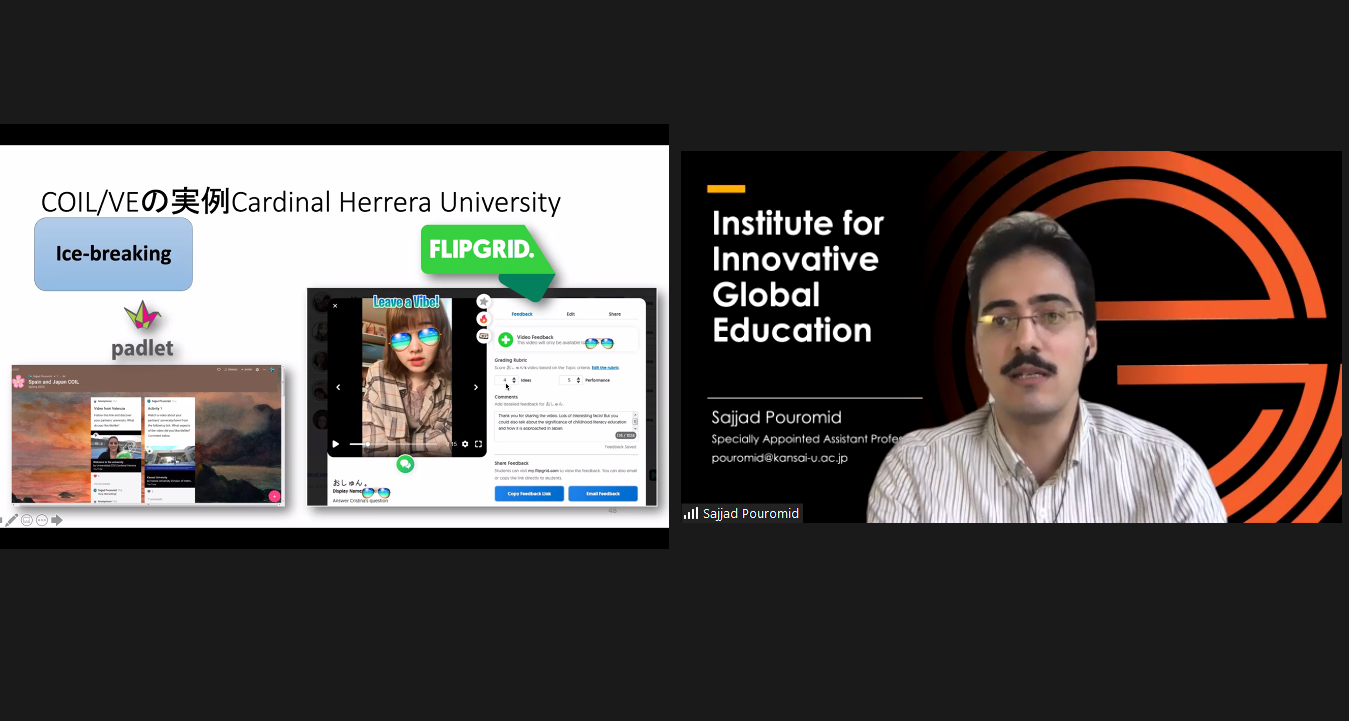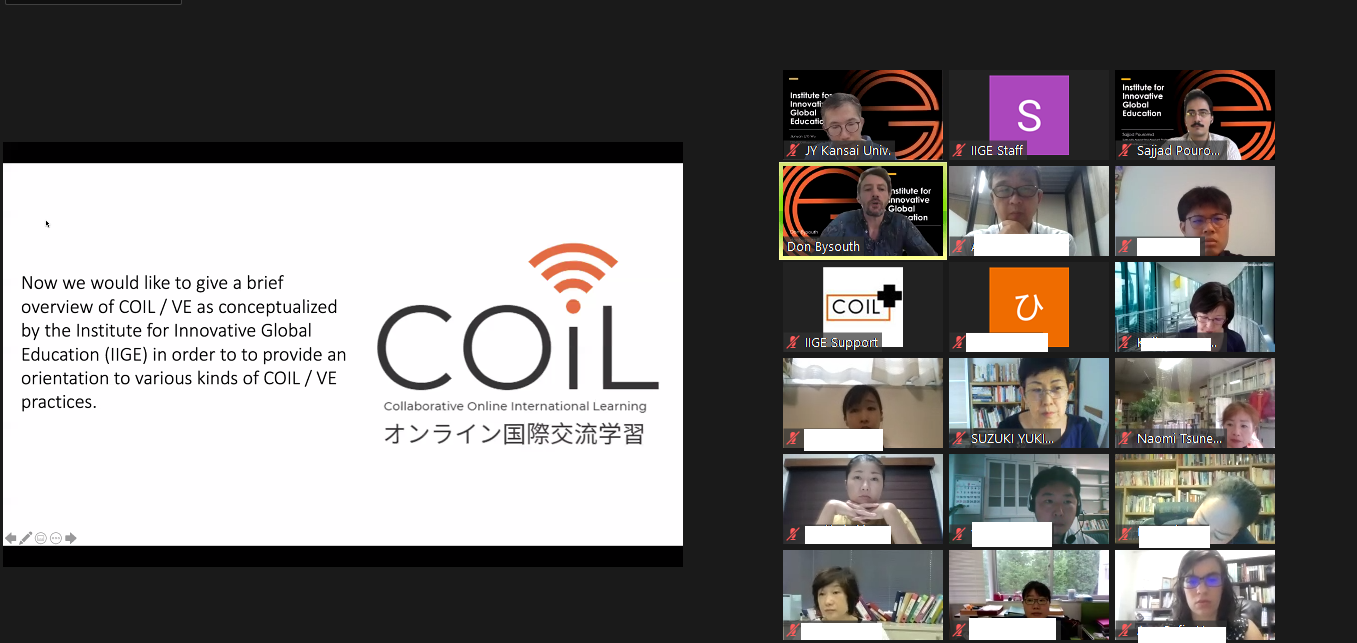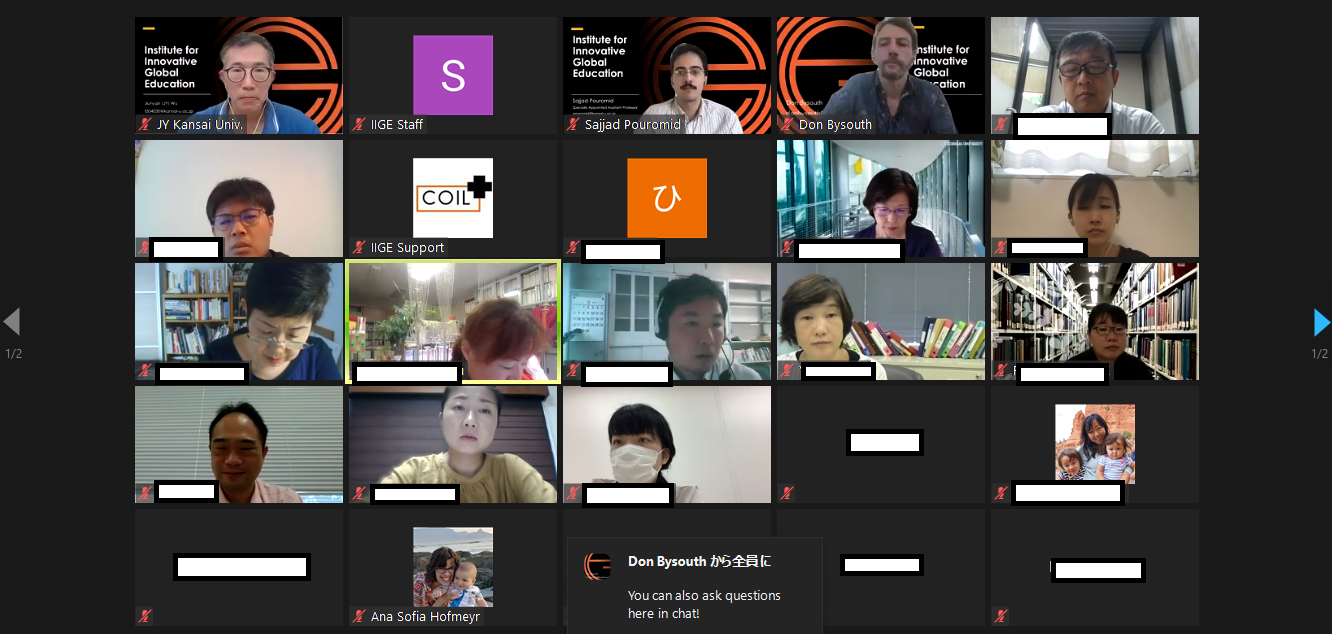2020.09.04News
SIIEJ 2020 "The Impact of COVID-19 and the Future of International Education" Session 1 "Virtual Exchange for International Education in a Time of Crisis"
On September 3rd and 4th, Dr. Don Bysouth, Specially Appointed Associate Professor at Kansai University, Dr. Pouromid and Mr. Jiun-Yan Wu, Specially Appointed Assistant Professors, held a session titled "Virtual Exchange for International Education in a Time of Crisis" as one of the sessions offered in SIIEJ 2020 organized by RECSIE (http://recsie.or.jp/).
IIGE at Kansai University has been acting as the platform for COIL initiative in Japan to promote exchange between Japanese higher education institutions and their overseas partners using COIL/VE. The main purpose of this session was for the participants to know more about COIL/VE as well as to learn how they can incorporate COIL/VE in classroom. Although COIL/VE may be interpreted as something that can be an alternative for international mobility programs which are all unavailable due to the current health crisis, in this session, COIL/VE was introduced as a more sustainable and inclusive means of international education.
The session began with a short survey on each institution’s response to COVID 19 crisis as well as the participants’ familiarity to COIL/VE. It was interesting to find out that although most of them knew of COIL/VE, they answered that they had never implemented it in their classroom before. After a brief introduction of COIL/VE, we moved on to showing different tools that could be applied, including different online applications and assessment tools. It was pointed out that the key to choose the right tool is to select one that is suitable for the students and the collaboration partner. In addition, COIL collaborations that have been conducted between Kansai University and our partner institutions were introduced as examples to show how a collaboration is planned and carried out, which enabled the participants to see the collaboration process from the beginning to the end.
Although some have commented in the post-session survey that they wished the session had been longer and they could have seen more details on the past collaborations KU had conducted, we hope that this session will encourage them to take the first step to incorporate COIL/VE in their institution and classroom.


